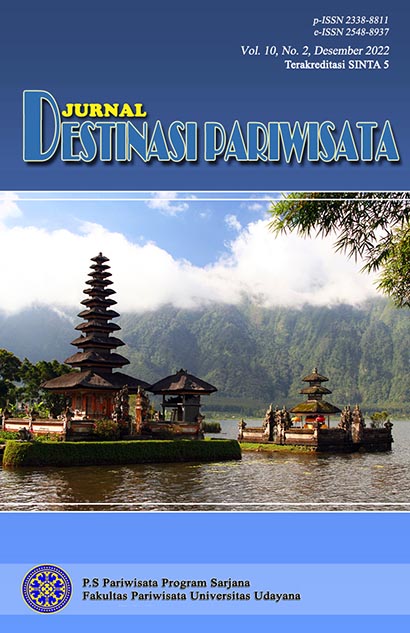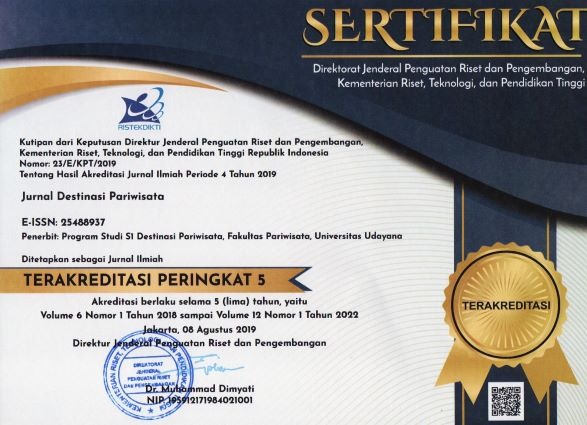Analisis Tipologi Wisatawan dalam Pengembangan Ekowisata di Taman Nasional Komodo, Nusa Tenggara Timur
Abstract
Komodo National Park (KNP) is one of Indonesia’s influential conservation sites that has caught the
public’s attention due to a massive, ongoing tourism development model that contrasts ecotourism principles.
Tourism developments are mostly based on potential and demands which generally stem from tourists. By
analyzing the tourist typology of Komodo National Park, authorized stakeholders could synchronize between
the development model and tourists’ demands which will result in an equilibrium that supports both the
conservation and tourism functions of Komodo National Park.
This research uses a mixed-method, using both qualitative and quantitative approaches. The data were
collected through non-participatory observation, literature study, documentation, and online questionnaires.
It uses purposive sampling with a close-ended questionnaire using the Likert Scale. The theory used in this
study is the Tourist Psychographic Typology.
The research results indicated that aggregately, tourists’ visit rate in Komodo National Park is increasing
in numbers although it is still fluctuating by nature, especially with the COVID-19 Pandemic intervention. This
research also found that from a psychographic model, the majority of Komodo National Park’s tourists are in
the ‘near-allocentric’ pole. Therefore, it is concluded that the applied tourism policies should be re-evaluated to
maintain and uphold the applicable ecotourism principles.
Keywords: Tourist Typology, Ecotourism, Psychographic, Conservation Tourism.
Downloads









